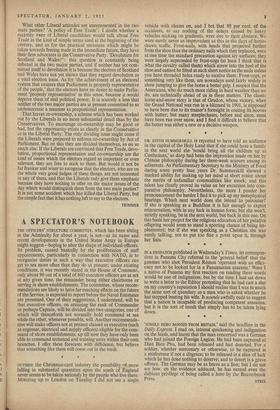A SPECTATOR'S NOTEBOOK
THE OFFICERS' STRUCTURE COMMITTEE, which has been sitting in the Admiralty for about a year, is not—as its name and recent developments in the United States Army in Europe might suggest—hoping to alter the shape of individual officers. Its problem, caused basically by the proliferation of staff appointments, particularly in connection with NATO, is to reorganise duties in such a way that executive officers can get to sea more often than they do at present; under existing conditions, it was recently stated in the House of Commons, only about 90 out of a total of 600 executive officers are at sea at any given time, the remainder being either chairborne or serving in shore establishments. The committee, whose recom- mendations are likely to have far-reaching effects on the future of the Service, is expected to report before the Naval Estimates are presented. One of their suggestions, I understand, will be that executive officers, on attaining the rank of Commander or perhaps Captain, will be divided into two categories, one of which will thenceforth not normally hold command at sea while the other, whenever possible, will. Another recommenda- tion will make officers not at present classed as executive (such as engineer, electrical and supply officers) eligible for the com- mand of shore establishments; up till now they have only been able to command technical and training units within their own branches. I offer these forecasts with diffidence, but believe that something like them will come out in the wash.














































 Previous page
Previous page